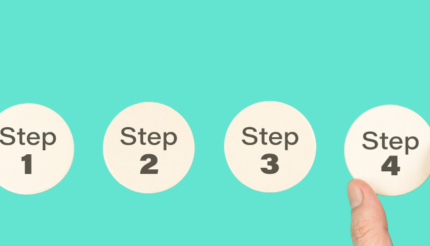How to be brilliant at time management … when you own a business, you should only work 40 hours a week. As Lee Iacocca, former chairman of Chrysler Corporation said, if you run your own business and can’t be home for dinner with your family at 6 o’clock, you’re doing something wrong.
Time mastery and self-mastery
Time management is mastering yourself and your habits. The clock doesn’t stop, so you can’t rule time; you can only discipline yourself and master how you use the time to grow your business.
When you’re the CEO of your company, no one tells you what needs to happen, so you must become brilliant at self-management. What are your goals with your time?
If you don’t have time goals, set them: Get rid of the “I can be here all day” or “I can work all night” mentality.
If you want to double productivity, you can either double the number of people in your business or work faster and better to get more done in less time. So, how do you improve productivity from people and yourself?
4 Steps to Be Proactive with Your Time
The trick to maximise your results is to be proactive; you want to change the “my door is always open” policy and implement a schedule where you focus on the activities that bring more profit.
1. Keep a time log
In the next two weeks, track every minute of your day – just measuring will make you more productive.
After several days, you’ll begin to notice patterns and identify the timewasters. Pick the five things that consume most of your time, whether they’re activities, places you have to be, or people in your company.
2. Be proactive about timewasters
Once you’ve acknowledged the timewasters, you must learn to eliminate them, and then break your tasks down into daily, weekly, monthly or quarterly activities. Once you have a full picture, here’s what you need to do:
- Break tasks into three categories: what needs to be organised and what you can delegate. If doing paperwork is the most time-consuming task, start designing simple systems and then use the system to train someone.
- Deal with people in your organisation that make you waste time. Note that often they don’t realise they waste your time, so you need to identify what causes the situation in the first place. The employee might need training, or permission to make decisions.
You need to change your mindset and learn to delegate, and a way to do this is by working out how much it costs you to complete a task, and then seeing if it is viable to set a rate per hour that you can pay someone else to do the work.
Put a step-by-step plan in place for those tasks and delegate. This way, you can focus on what brings in more money, such as marketing, sales, working with senior management, or serving and taking care of your best customers.
3. Prioritise tasks
You’ve made a list of your routines and eliminated the timewasters, so now it’s time to break down the list by priority. Create a system from A to D, where A represents the most important tasks you need to complete in order to run your business. The matrix should look like this:
A 1-5, where you list the highest priority tasks.
B 1-5, where you list tasks that matter, but aren’t as crucial as A tasks.
C 1-5, where you list tasks you will do if you can.
D 1-5, tasks you can delegate.
4. Build a default diary
The default diary is a planner where you put a time frame on each task listed in the previous step. For example, activity A1 will take 35 minutes; activity A2 requires 25 minutes, etc. This way, you know ahead that you have default tasks you should be doing between specific hours every week.
Ensure the highest priority tasks are tackled first and schedule those top priority tasks on Monday. Implementing the system takes time and requires discipline. To make sure you follow the default diary, plan at least an hour a day for reactive tasks, such as answering emails, talking to employees, and handling the timewasters.
You can make the process easier using your virtual assistant on your smartphone or hire an executive assistant.
Replicate the System for Your Team
After you learn self-mastery, you need to teach your employees to do the same. Ask them to keep a time log, and you’ll see how this activity alone will increase productivity. Encourage your staff to write down tasks for the following day before leaving the office. This simple exercise can result in 30% more work completed.
Ask them to:
- Create the list before going home, as the brain is fresh about what tasks and what needs to be done.
- Handwrite the tasks because the brain engages differently when people write by hand. People will continue to think about the activities for the next 12-14 hours. The brain processes in the background, and when they do the task, the following day, they work faster.
Make it a rule for your employees to do this exercise every day for a couple of weeks. Ask them to send you proof and as they get better at this, encourage them to start prioritising, following the same A/B/C/D system you use.
The next step is to teach employees how to add a time frame to each task. Note that nothing should take one hour. Ask them to be more specific than that and think seriously about how much time they need.
Once they’re good at the daily list, they can step to the Friday list for the following week. So, each Friday, they’ll have to write down two lists: one for Monday and one for the whole week. At this stage, all you have to do is check the weekly plan and randomly verify that they achieve the tasks on their daily list too.
What’s Next?
If you’re at your home and you’re thinking about your work, you’re not doing a good job!
Remember that the goal is to build a vehicle that gives you the lifestyle you want. Set the goals and implement the strategies starting from today. Don’t panic if you can’t get it all done the first time; as a guideline, you might need about 90 days to make the change and see results because you and your team need to learn new habits.
If you’re always thinking about work when you’re at home with your partner and children, and would like to learn how to be brilliant at time management, sign up for a free coaching session where I can tell you more about time mastery, or join my private Facebook Group, The Business Garden, where you see it in action.





